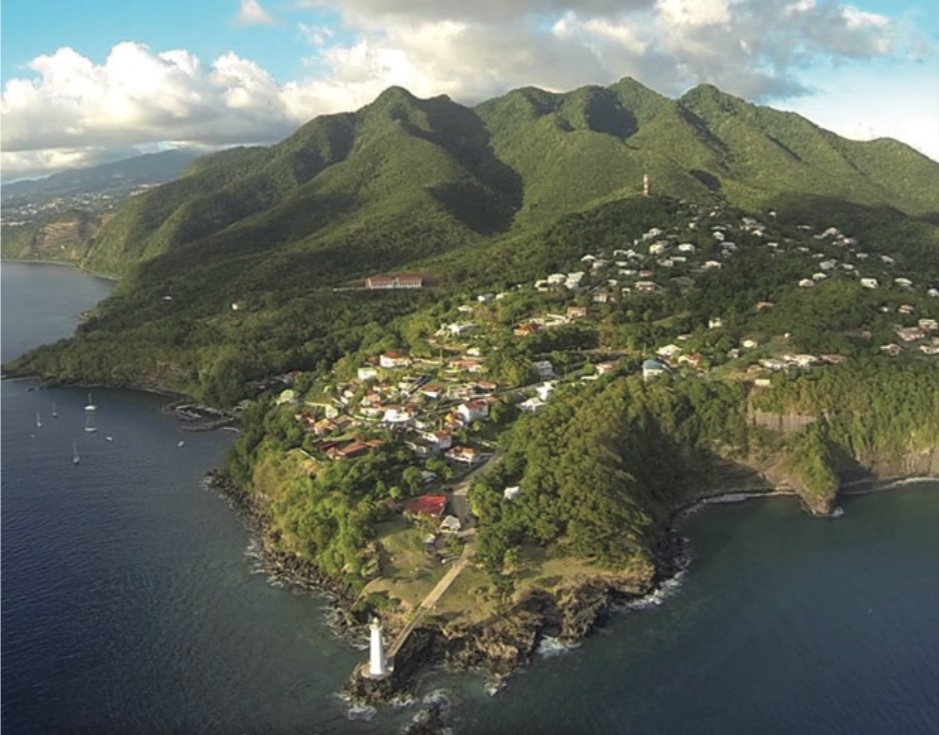
THE MOUNTAINS OF THE CARAÏBE
Description
It is south of Basse-Terre where the Caraïbe Mountains meet. This vast expanse that culminates
in the “Wind blows” mountain at 687 meters above sea level, is a true ecological jewel. These
mountains appeared 500,000 years ago after an underwater volcanic eruption and it was the
lava flows from La Soufrière that linked them to Basse-Terre.
Due to their endemism, they are full of exceptional and rare species. All types of forests present
in Guadeloupe can be found there. To the east, its slopes are swept by the trade winds* giving
rise to humid vegetation characteristic of the windward coast. To the west, the relief of ancient volcanoes causes the foehn effect, so the slopes are drier with characteristics of the leeward
coast. These characteristics and its proximity to the sea have made it a place of life, having sheltered the Kali’nas hunters, fishermen, but also producers of food crops whose remains
have been found. They fished in “Kanaoa”, canoes that hollowed out the trunk of the
candlewood (Dacryodes excelsa) over the fire.
Today, the mountains of the Caribbean are traversed in search of the wild and rare orchids
(Orchis spp.) that live there. “Le Houelmont”, an ancient submarine volcano, is home to the
Soufrière volcano observatory.
Biodiversity
The Caribbean mountains are home to species that are among the rarest in Guadeloupe. The
diversity of habitats results in a rich flora and fauna, and certain species of orchids only exist
here. In this isolated volcanic universe of the Soufrière massif, very different microclimates*
coexist. Depending on the altitude and exposure, it is home to different types of forests,
especially on Morne Cadet (cloud forests, ombrophilous forests, etc.). On the side of the
“Ravine Salée” located between Morne Griselle and Houëlmont, there is a riparian forest*
planted with chestnut (Castanea sativa), olive (Olea europaea ssp.), false mastic (Sideroxylon
foetidissimum) and sandbox tree (Hura crepitans) classified as Natural Area of Faunistic and
Floristic Interest (ZNIEFF)*.
As for fauna, more than thirty species of birds nest in the mountains, including the black
woodpecker (Dryocopus martius), endemic to Guadeloupe. One hundred species of insects
have been listed there, including the impressive hercules beetle (Dynastes hercules), one of the
longest flying insects in the world
Ecotourism potential
The visit to the Caribbean Mountains is one of the most beautiful in Guadeloupe, its exuberance
and its viewpoints will enchant you. Several walks are available, such as the one to Houëlmont
in the middle of ZNIEFF, and the one across the Morne Cadet ridge which offers stunning
views of Saintes to the south and La Soufrière to the north.
From the Pointe du Vieux-Fort, “Guadeloupe Long-Distance Hiking Route” or GRG1 crosses
the Caribbean Mountains before continuing north and Soufrière, to reach Amandiers beach in
Sainte-Rose in 5 to 6 days.
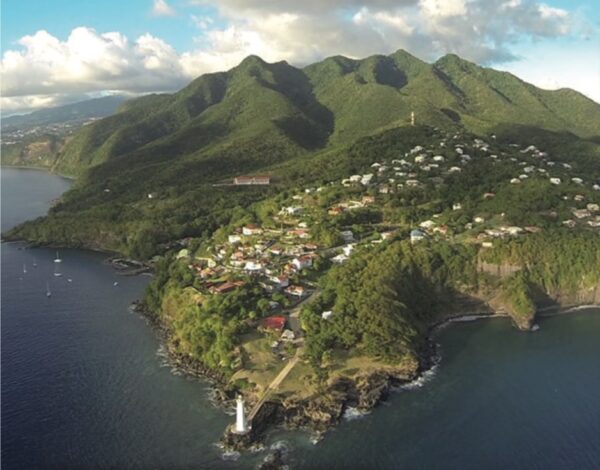
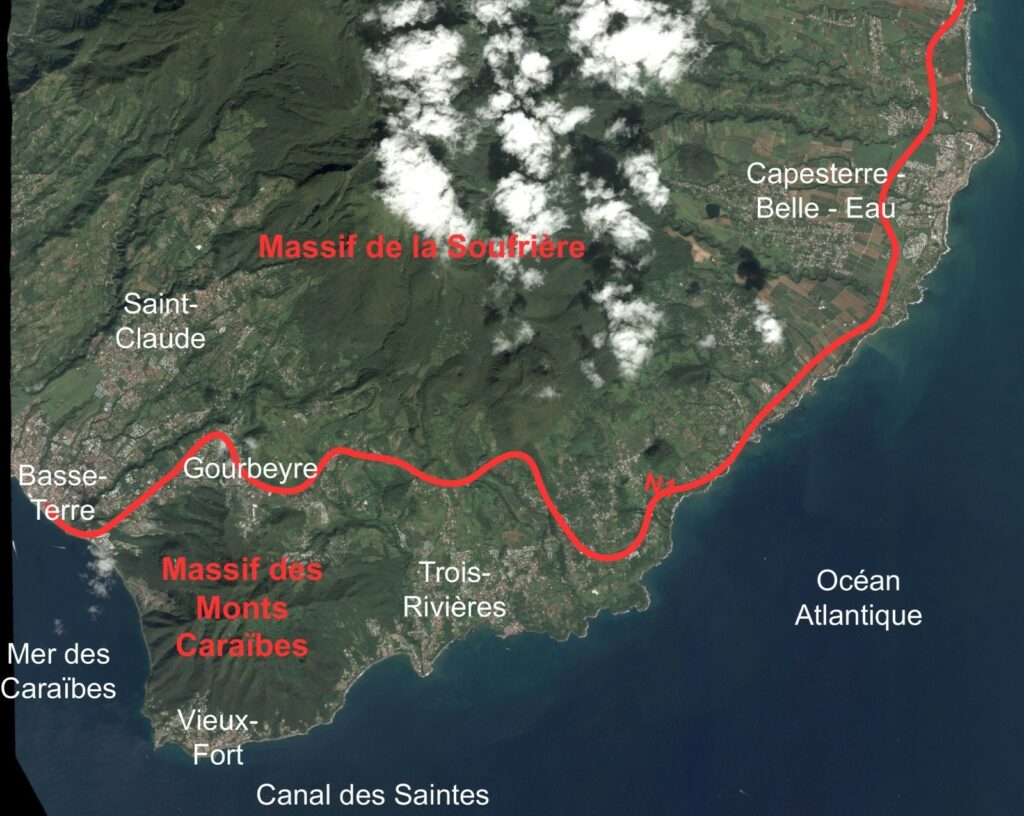
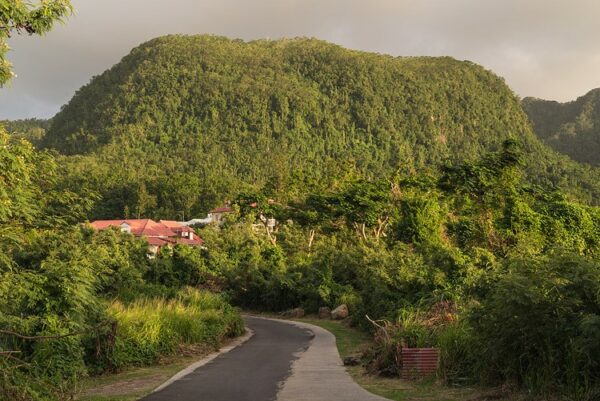
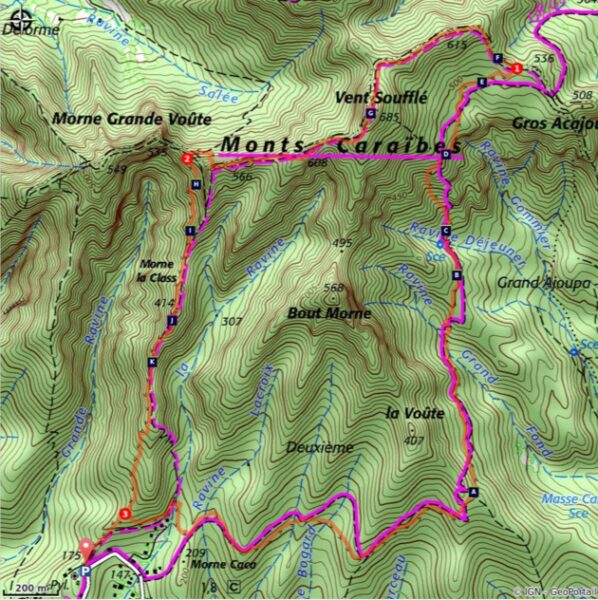
Informations
-
Types de milieux
Monts -
Location
Guadeloupe (Saint-Claude)
